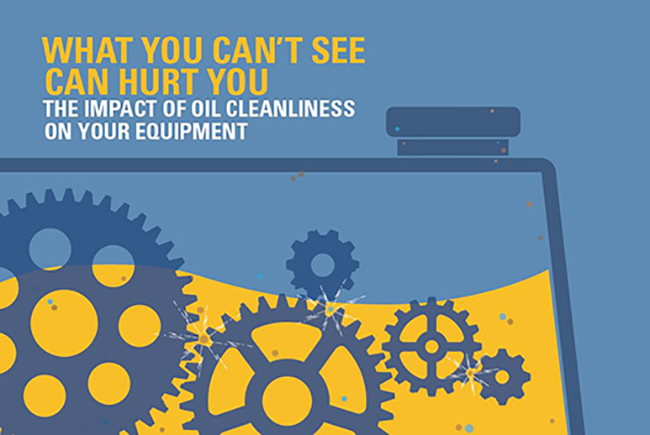ISOCLEAN® FAQs


ISOCLEAN® Certified Lubricants are Chevron lubricants that have been certified to meet ISO cleanliness specifications at point of delivery.
ISO Cleanliness Codes are a way to measure the number and size of particles in a sample of lubricants.
During the industry standard distribution process, oil can be handled up to 5-7 times before it reaches the customer's equipment.
Not much. As little as 1 teaspoon of dirt in a 55 Gallon/208 Liter drum could equate up to about a billion particles size 4 micron and larger.
Lubricant cleanliness is driven by the OEM Specification, machine tolerances of the components being lubricated and system pressures. Recommended Cleanliness Level to develop the appropriate fluid cleanliness target.
Starting with a clean lubricant prevents wear and tear in your system from the moment the lubricant circulates. This enables components to achieve the maximum amount of life as well as the ability to extend filter and lubricant life. In a nutshell, starting clean means less waste and longer component life. Reference Industry Life Extension tables to identify the opportunity for extending component life.
Due to the challenges with industry standard delivery processes, it is very difficult to maintain oil cleanliness all the way through the distribution process to the customers' location.
Every delivery includes an ISOCLEAN® certificate of analysis showing the cleanliness level of the lubricants.
Please refer to the Industrial Products Learning section and our Technical Bulletin called "Particle Counting for Lubricants"
Use a new clean, sealed sample bottle, thoroughly flush valves and piping, Fill sample bottles half full, place the cap on the sample bottle, and shake vigorously for 15 seconds. Complete this process for a total of 3 times prior to completely filling the sample bottle.
A patch test is a simple way to visually see the contamination in oil.
Life extension tables are a way to compare machine life to the different levels of oil cleanliness.
System filters can help reduce contamination levels; however, equipment damage may occur during this time.
The simple answer is no. Lubricants are formulated differently across manufacturers and types. Always check with your lubricant manufacturer.
Yes, by using a certified clean lubricant, like ISOCLEAN® Certified Lubricants, over time the oil in your tanks will eventually become clean.
Yes. Starting with a certified clean lubricant like ISOCLEAN® Certified Lubricants may reduce future wear and improve system efficiency.
Start with referencing your OEM specification. If one does not exist use Industry Component Standard tables or the ISO 12669. Or if you want assistance finding out the optimal spec, contact a Chevron Representative.
Three easy steps will get you on your way:
1. Start Clean: Pick the OEM Spec with the tightest cleanliness level.
2. Monitor: Measure the results along the oil handling and dispensing path. Let data drive your decisions for capital investment in product handling. A Chevron Representative can help guide you through this journey.
3. Stay Clean and reap the benefits of lowering your total cost of operations.
Need help finding a Chevron ISOCLEAN Certified Lubricants Distributor?
Click here.


Think filters on their own - or simply following a PM schedule -
will keep your oil clean? There's more to oil cleanliness than meets the eye.
Self services
Delo fuel saving Calculator
Delo means efficiency. Fuel economy without sacrificing engine protection. Save money, and lower GHG emissions
Pro services
LubeWatch Fluid Analysis
Keep your equipment running better longer with LubeWatch® routine testing and analysis
ISOCLEAN® Certified Lubricants Program
Ensure your lubricants meet OEM cleanliness requirements to help minimize downtime, reduce maintenance costs, and extend equipment life.






























